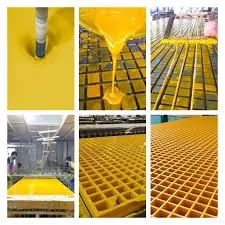
-
 Afrikaans
Afrikaans -
 Albanian
Albanian -
 Amharic
Amharic -
 Arabic
Arabic -
 Armenian
Armenian -
 Azerbaijani
Azerbaijani -
 Basque
Basque -
 Belarusian
Belarusian -
 Bengali
Bengali -
 Bosnian
Bosnian -
 Bulgarian
Bulgarian -
 Catalan
Catalan -
 Cebuano
Cebuano -
 China
China -
 China (Taiwan)
China (Taiwan) -
 Corsican
Corsican -
 Croatian
Croatian -
 Czech
Czech -
 Danish
Danish -
 Dutch
Dutch -
 English
English -
 Esperanto
Esperanto -
 Estonian
Estonian -
 Finnish
Finnish -
 French
French -
 Frisian
Frisian -
 Galician
Galician -
 Georgian
Georgian -
 German
German -
 Greek
Greek -
 Gujarati
Gujarati -
 Haitian Creole
Haitian Creole -
 hausa
hausa -
 hawaiian
hawaiian -
 Hebrew
Hebrew -
 Hindi
Hindi -
 Miao
Miao -
 Hungarian
Hungarian -
 Icelandic
Icelandic -
 igbo
igbo -
 Indonesian
Indonesian -
 irish
irish -
 Italian
Italian -
 Japanese
Japanese -
 Javanese
Javanese -
 Kannada
Kannada -
 kazakh
kazakh -
 Khmer
Khmer -
 Rwandese
Rwandese -
 Korean
Korean -
 Kurdish
Kurdish -
 Kyrgyz
Kyrgyz -
 Lao
Lao -
 Latin
Latin -
 Latvian
Latvian -
 Lithuanian
Lithuanian -
 Luxembourgish
Luxembourgish -
 Macedonian
Macedonian -
 Malgashi
Malgashi -
 Malay
Malay -
 Malayalam
Malayalam -
 Maltese
Maltese -
 Maori
Maori -
 Marathi
Marathi -
 Mongolian
Mongolian -
 Myanmar
Myanmar -
 Nepali
Nepali -
 Norwegian
Norwegian -
 Norwegian
Norwegian -
 Occitan
Occitan -
 Pashto
Pashto -
 Persian
Persian -
 Polish
Polish -
 Portuguese
Portuguese -
 Punjabi
Punjabi -
 Romanian
Romanian -
 Russian
Russian -
 Samoan
Samoan -
 Scottish Gaelic
Scottish Gaelic -
 Serbian
Serbian -
 Sesotho
Sesotho -
 Shona
Shona -
 Sindhi
Sindhi -
 Sinhala
Sinhala -
 Slovak
Slovak -
 Slovenian
Slovenian -
 Somali
Somali -
 Spanish
Spanish -
 Sundanese
Sundanese -
 Swahili
Swahili -
 Swedish
Swedish -
 Tagalog
Tagalog -
 Tajik
Tajik -
 Tamil
Tamil -
 Tatar
Tatar -
 Telugu
Telugu -
 Thai
Thai -
 Turkish
Turkish -
 Turkmen
Turkmen -
 Ukrainian
Ukrainian -
 Urdu
Urdu -
 Uighur
Uighur -
 Uzbek
Uzbek -
 Vietnamese
Vietnamese -
 Welsh
Welsh -
 Bantu
Bantu -
 Yiddish
Yiddish -
 Yoruba
Yoruba -
 Zulu
Zulu
grp damper
Understanding GRP Dampers Applications and Benefits
In various engineering applications, the need for effective vibration control and energy absorption is paramount. This is where devices like the GRP (Glass Reinforced Plastic) damper come into play. GRP dampers are increasingly used in construction, transportation, and machinery to mitigate vibrations and enhance structural resilience. This article will explore the composition, advantages, applications, and future potential of GRP dampers in modern engineering.
Composition and Characteristics
GRP, also known as fiberglass, is a composite material made of a polymer matrix reinforced by glass fibers. This combination results in a lightweight yet strong material that exhibits excellent mechanical properties. GRP dampers leverage these properties to absorb and dissipate vibrational energy effectively. Their unique construction allows them to withstand extreme environmental conditions, including moisture, UV radiation, and temperature variations, making them suitable for outdoor applications.
Advantages of GRP Dampers
1. Lightweight Yet Strong One of the primary benefits of GRP dampers is their favorable strength-to-weight ratio. Unlike traditional materials such as steel, which can add considerable weight to a structure, GRP provides similar or superior strength with significantly less mass. This characteristic makes GRP dampers especially advantageous in applications where weight is a critical factor.
2. Corrosion Resistance GRP is inherently resistant to corrosion, which is particularly beneficial in environments that expose components to moisture, chemicals, or saline conditions. This durability extends the lifespan of dampers, reducing the need for frequent maintenance or replacement.
3. Versatility GRP dampers can be engineered to meet specific requirements for various applications. They can be designed in different shapes, sizes, and stiffness levels, allowing for tailored solutions based on the unique demands of each project.
grp damper

4. Damping Efficiency When properly designed, GRP dampers can provide excellent energy absorption capabilities. This efficiency reduces the transmission of vibrations to the structural elements they are integrated with, enhancing performance and comfort, particularly in structures like bridges or buildings subjected to dynamic loads.
Applications of GRP Dampers
The versatility and effectiveness of GRP dampers have led to their application across multiple sectors. In civil engineering, they are commonly used in buildings and bridges to control vibrations caused by wind loads or seismic activity. By integrating GRP dampers into these structures, engineers can increase safety and durability while improving comfort for occupants.
In the transportation sector, GRP dampers find use in rail systems where they are utilized to reduce the noise and vibration generated by trains as they travel over tracks. These dampers help maintain the structural integrity of rail systems and enhance the comfort for passengers.
Moreover, GRP dampers are also utilized in mechanical systems to protect machinery from operational vibrations. By incorporating these dampers, manufacturers can improve the longevity and efficiency of their equipment, reducing maintenance costs and downtime.
Future Potential
As the demand for sustainable and efficient engineering solutions continues to grow, the future of GRP dampers looks promising. Ongoing research into composite materials and design optimization is expected to yield even more effective and efficient damping solutions. Additionally, as awareness of vibration control and energy absorption becomes more prevalent in engineering practices, GRP dampers may see expanded applications beyond their current uses.
In conclusion, GRP dampers represent a significant advancement in vibration control technology. Their unique properties and advantages make them suitable for a wide range of applications across various industries. As engineering practices evolve, the potential for GRP dampers to contribute to safer, more resilient structures and systems will only increase. Embracing these innovative solutions is essential for engineers looking to address the complex challenges of the modern world.
Latest news
-
Exploring the Benefits of Top Hammer Drifter Rods for Enhanced Drilling PerformanceNewsJun.10,2025
-
High-Precision Fiberglass Winding Machine for GRP/FRP Pipe Production – Reliable & Efficient SolutionsNewsJun.10,2025
-
FRP Pipes & Fittings for Shipbuilding - Corrosion-Resistant & LightweightNewsJun.09,2025
-
Premium FRP Flooring Solutions Durable & Slip-ResistantNewsJun.09,2025
-
Premium Fiberglass Rectangular Tanks Durable & Lightweight SolutionNewsJun.09,2025
-
Tapered Drill String Design Guide Durable Performance & UsesNewsJun.09,2025









